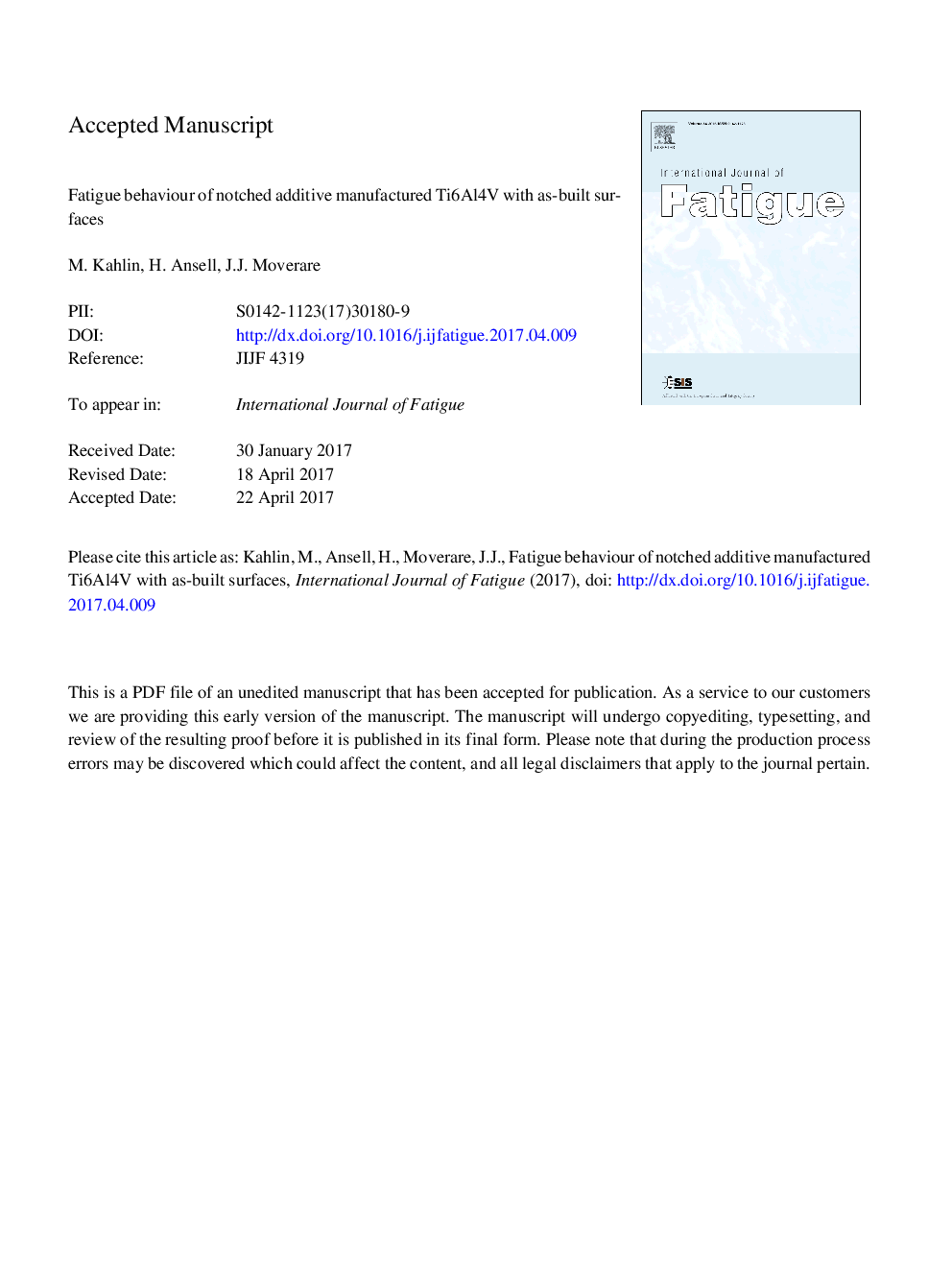| Article ID | Journal | Published Year | Pages | File Type |
|---|---|---|---|---|
| 5015078 | International Journal of Fatigue | 2017 | 27 Pages |
Abstract
Additive manufacturing (AM) allows the manufacturer to produce parts with complex geometries that are difficult to produce with conventional production methods. Generally, AM is considered to have great potential for the aerospace industry by contributing to reduced weight and lower costs. There are a number of challenges to be solved before AM can be fully utilized in the aerospace industry, and the understanding of fatigue behaviour is one of the major challenges. Although the fatigue properties of flat additive manufactured specimens with rough as-built surfaces already have been widely studied, in practice, few aerospace components have a simple flat geometry with no corners or radii that would act as stress concentrations. Therefore, the combined effect on fatigue life of a rough as-built surface and a geometrical notch needs to be established. In this study, the fatigue properties of both laser sintered and electron beam melted Ti6Al4V have been investigated and a combined effect of a rough as-built surface and a geometrical notch has been determined. In addition, hot isostatic pressing was found to have no impact on fatigue life for rough as-built surfaces. These findings can be directly applied to predict fatigue behaviour of an AM industrial component.
Related Topics
Physical Sciences and Engineering
Engineering
Mechanical Engineering
Authors
M. Kahlin, H. Ansell, J.J. Moverare,
